We are living in an age of content. From short-form content (think: social media posts, ad headlines) to long-form content (think: blog posts, website copy), what used to be a buzzword is now the norm. Be it to generate awareness or to drive conversions, content, and well-written marketing copy are a critical part of almost every marketing touchpoint imaginable.
Content marketing as a growth strategy exploded in the late 2000s and has only been accelerating since then. With the increasing amount of content available online today, the need for effective, informative copy is greater than ever before. The challenge is twofold: first, to generate large amounts of content to meet the increasing speed of consumer demand, and second, to write quality content that drives high-intent organic traffic to stand out from the existing noise and fluff that crowds the web. The challenge of ensuring both quality and quantity of content therein poses the question: how should brands and marketers rise up to the challenge given the immense amount of investment, dedication and effort that good copywriting requires?
This is where AI copywriting tools enter the picture.
What are AI copywriting tools?
AI copywriting tools are essentially artificial intelligence-powered copywriters that can generate large amounts of copy in short amounts of time. These tools can create anything from Facebook ads to articles in a matter of seconds, making them extremely helpful for lean teams to save time and money while maintaining a steady content cadence. Even for larger teams that do have the time and resources to dedicate to copywriting, AI writing tools can help combat writer’s block and stimulate creativity during brainstorming and ideation stages.
How do AI copywriting tools work?
While every AI copywriting software is slightly different (we’ll get into the pros and cons of each later), the basic structure of them all involves a version of an input-output formula. Brands, marketers or copywriters enter certain types of information, and the AI will output content based on the information provided and the selected content format.
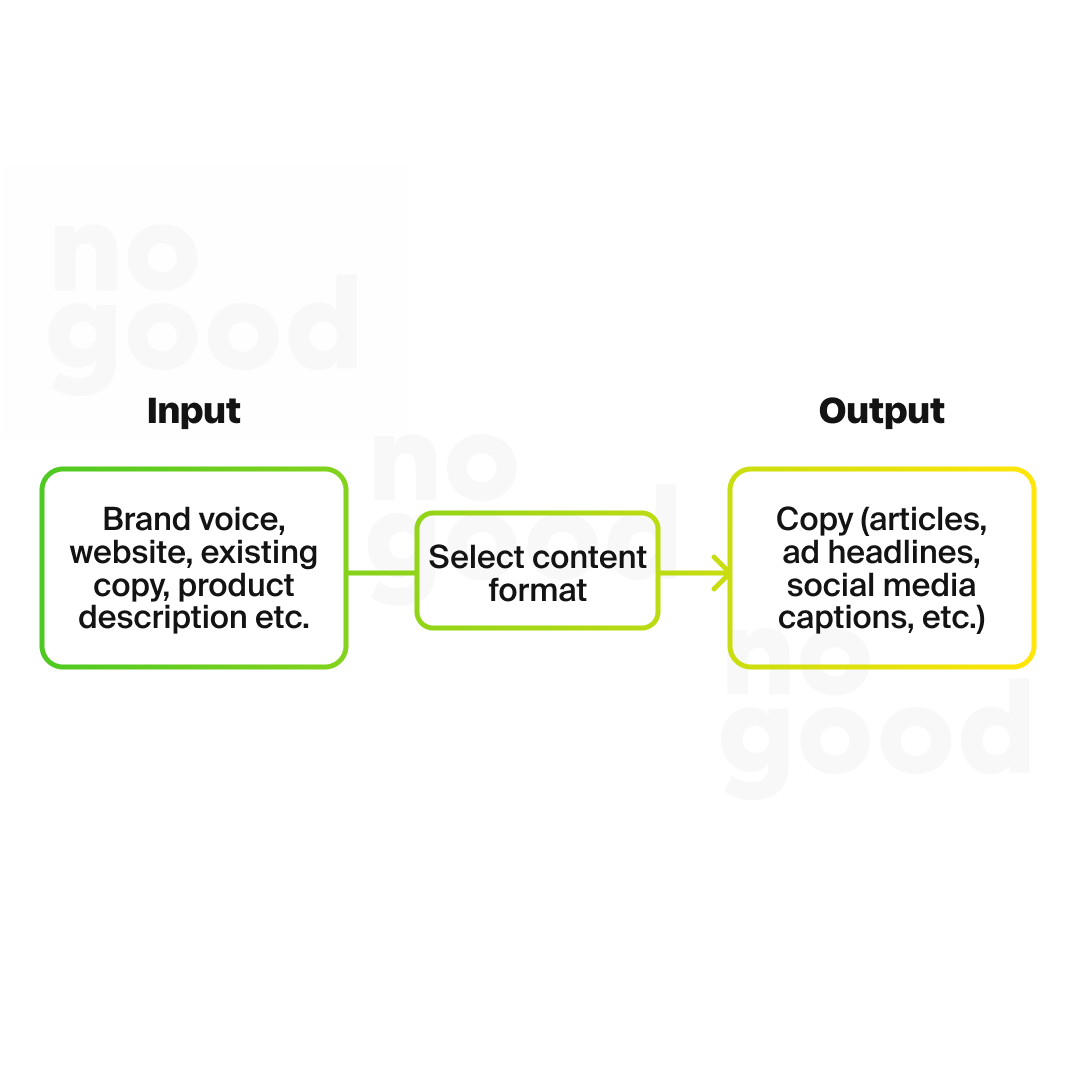
AI copywriting tools use natural language processing (NLP) software to perform reading and writing tasks at a near-human level. These machine learning algorithms scan the web for patterns and copywriting best practices to then generate copy based on existing available knowledge.
How to use AI copywriting tools?
Despite the straightforward nature of how AI copywriting tools work, the process of using them is not as simple as just copying and pasting the automatically generated content. Expert copywriters and content marketers know that AI-generated copy is rarely ever immediately the perfect fit for the context or use case in mind. AI content generators can serve as a good starting point, but that is only one part of the puzzle. The process of effectively using AI copywriting tools should follow these 3 steps:
Step 1: Set parameters and input information
The first step to ensuring that you are getting the most out of your AI copywriting tools is to feed the algorithm as much useful information as possible. This information might include your brand’s tone of voice, existing copy available on your brand website, the context and platform the copy is for, and any relevant parameters such as word limits or character counts. This is particularly important for tools that limit the number of content pieces you can generate within a specific subscription tier — you want to make sure you are giving the AI enough information to generate the best, most relevant content possible.
Step 2: Generate and select content
Generating content is never a one-and-done process. Most times, particularly for short-form copy such as ad headlines or social media content, you will be generating and choosing from multiple copy variations. Run through all the copy variations generated, and shortlist a couple of options to edit and refine (the number of shortlisted options depends on the content length itself).
Step 3: Read, revise, and refine
The last and arguably most important step of using AI copywriting tools is to view your AI-generated content through a human eye. Does the copy resonate with your target audience? Does it align with your overall brand voice and the visual asset (if applicable) it’s paired with? Does it achieve the intended goal of generating awareness, improving consideration, or driving conversion? The best copywriters look at AI copywriting tools as a team member and not an all-knowing leader. Always make sure to look at AI-generated copy through a critical lens and understand that the best results come through a combination of both an AI algorithm and a human mind.
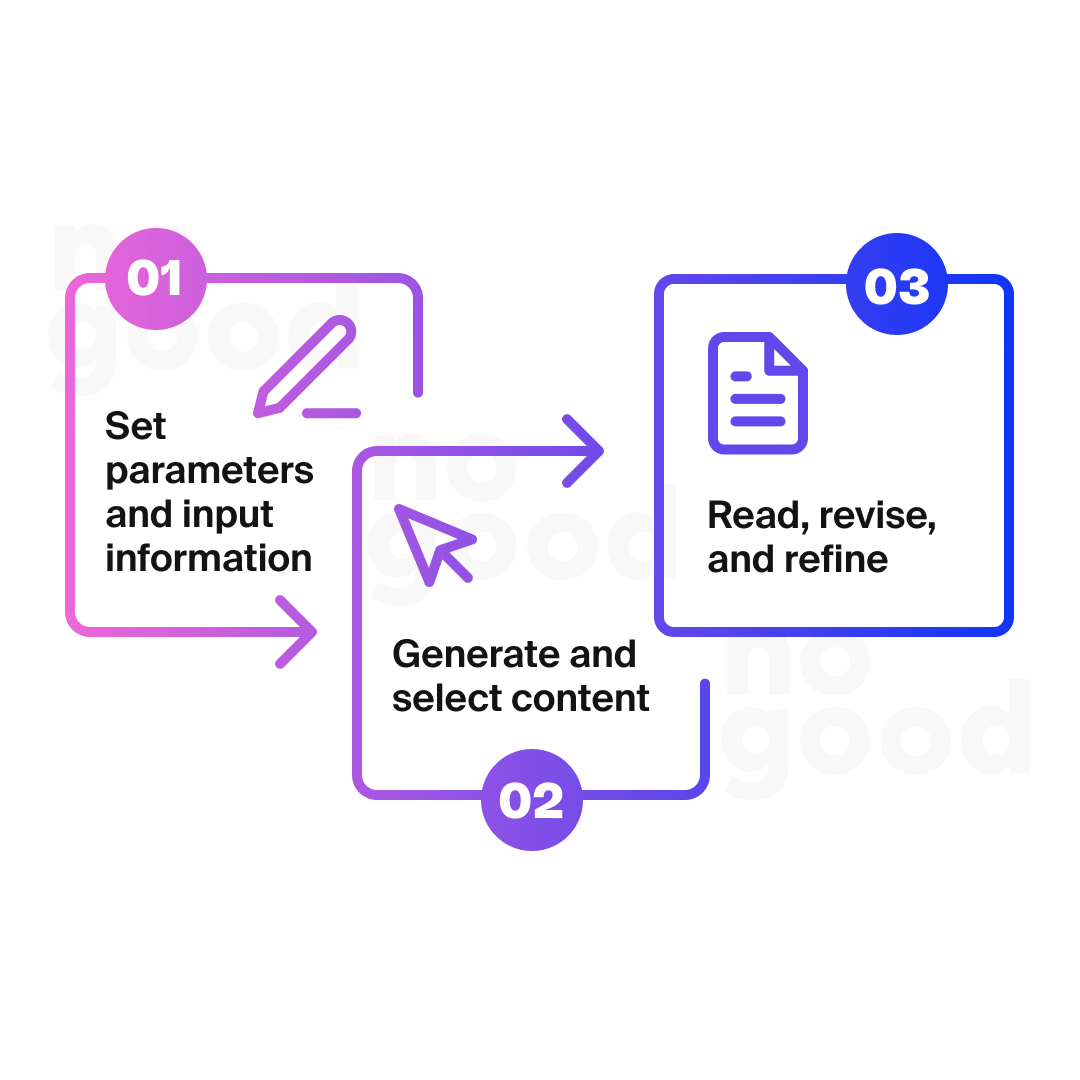
What is the best AI copywriting tool?
We’ve analyzed hundreds of AI tools and narrowed them down to the top 10 best AI copywriting tools to use for your business.
- Jasper.ai
- Copy.ai
- Anyword
- Rytr
- Hypotenuse AI
- Writesonic
- Copysmith
- InstaText
- Friday
- Snazzy AI
- Notion AI
1. Jasper.ai
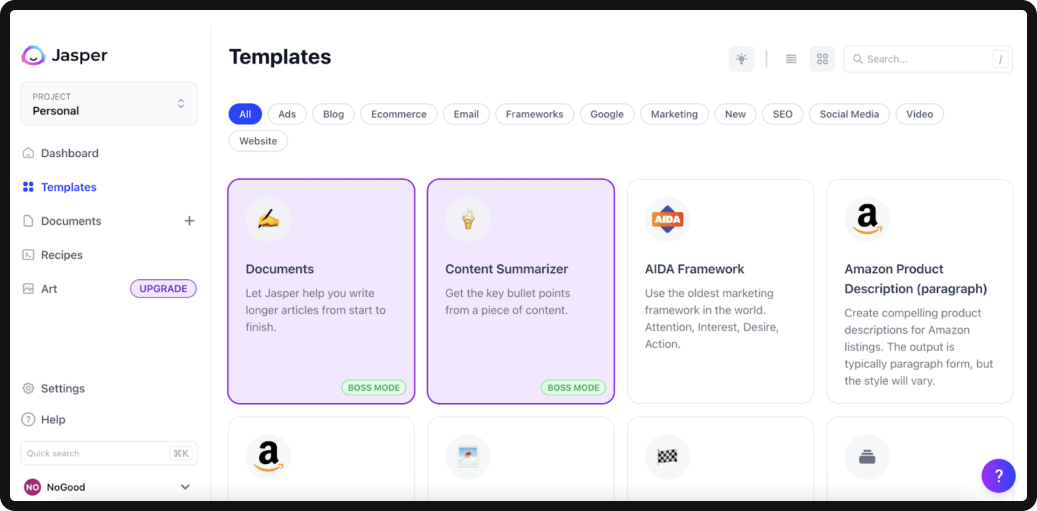
Japer.ai is rated as the #1 AI content platform for creators and marketing teams, and is trusted by 70,000+ marketers at companies including Airbnb, Google, and IBM. In addition to typical types of content such as ads, emails, and websites, Jasper.ai can also create AI art and images from a description. Users of Jasper.ai have reported satisfaction with high-converting ad copy, game-changing brainstorming potential and flexibility with 26+ language options.
Price: Starter subscription at $40/month
Pro: Has an easy-to-use Japser chrome extension
Con: Does not have a free plan
2. Copy.ai
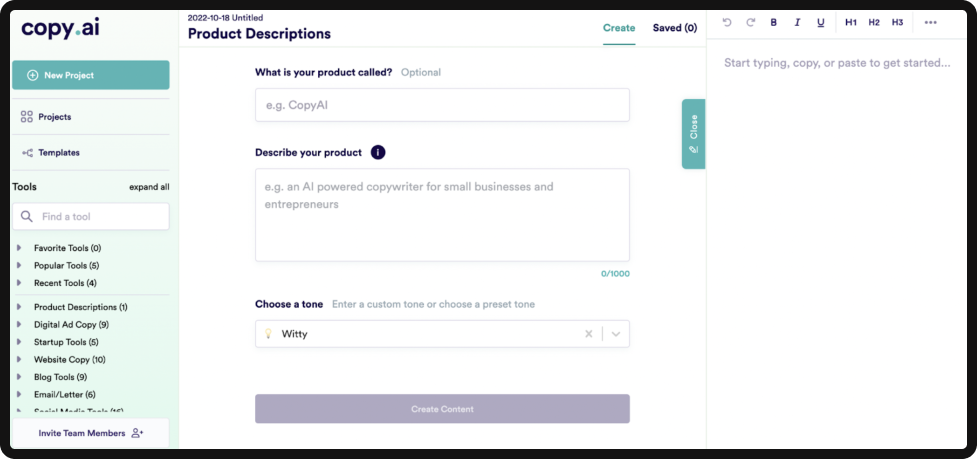
Copy.ai is often the go-to AI copywriting tool for many brands and businesses, such as Microsoft, eBay, and Nestle. With 90+ different templates, Copy.ai can generate content for a variety of different platforms and formats, ranging from blogs to ads to sales copy. Whether you’re an email marketer, a social media manager or a startup owner, Copy.ai can help you write copy 10x faster and get better results in a fraction of the time. To get started, you can simply select a project or template, enter details about your project, and select a tone of voice before letting the AI do its work.
Price: Free subscription or $49/month for Pro
Pro: Allows you to select a tone of voice or enter a custom tone
Con: Relatively simplistic and lends itself better to short-form copy
3. Anyword

Anyword is an AI copywriting tool that provides powerful predictive analytics that tell you what works before you hit publish. Used by marketers and copywriters at Red Bull, Condé Nast and Equinox, Anyword is particularly useful for creating custom user personas to get tailored copy specific to your customer base.
Price: Free subscription or $24/month for Basic
Pro: Different plans for Enterprises to acquire, convert, or engage customers
Con: More specifically suited for blogs and websites
4. Rytr
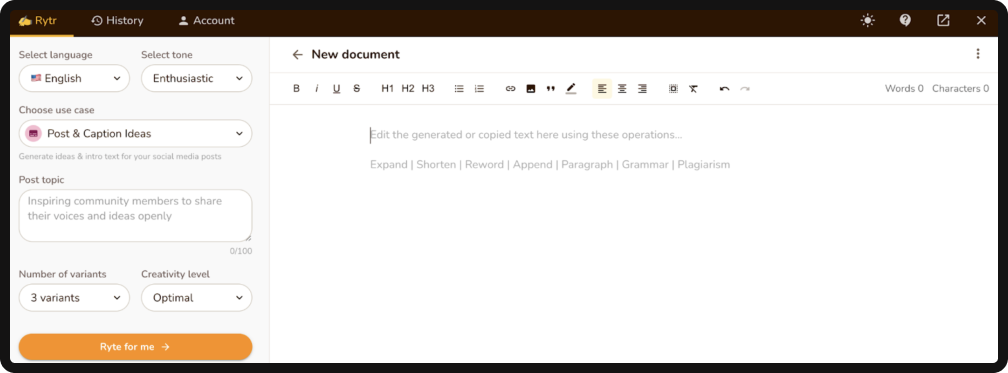
Rytr is an AI writing assistant that helps you create high-quality content, in just a few seconds, at a fraction of the cost. Trusted by 2,500,000+ content writers from companies including Adidas, Ikea, and Pfizer, Rytr uses a state-of-the-art AI language model to generate unique, original content for almost any vertical.
Price: Free subscription or $29/month for Unlimited
Pro: Robust project management features for managing writing workflows
Con: Limited tone of voice selections
5. Hypotenuse AI

Hypotenuse AI tackles writer’s block by helping marketers and copywriters generate content in the matter of seconds. Most commonly used for content such as product descriptions and e-commerce websites, Hypotenuse AI is a scalable solution for rapidly-growing businesses that are tasked with producing a large amount of content in a small amount of time.
Price: $24/month for Starter plan
Pro: Integration with Spotify
Con: More specifically suited for e-commerce brands
6. Writesonic
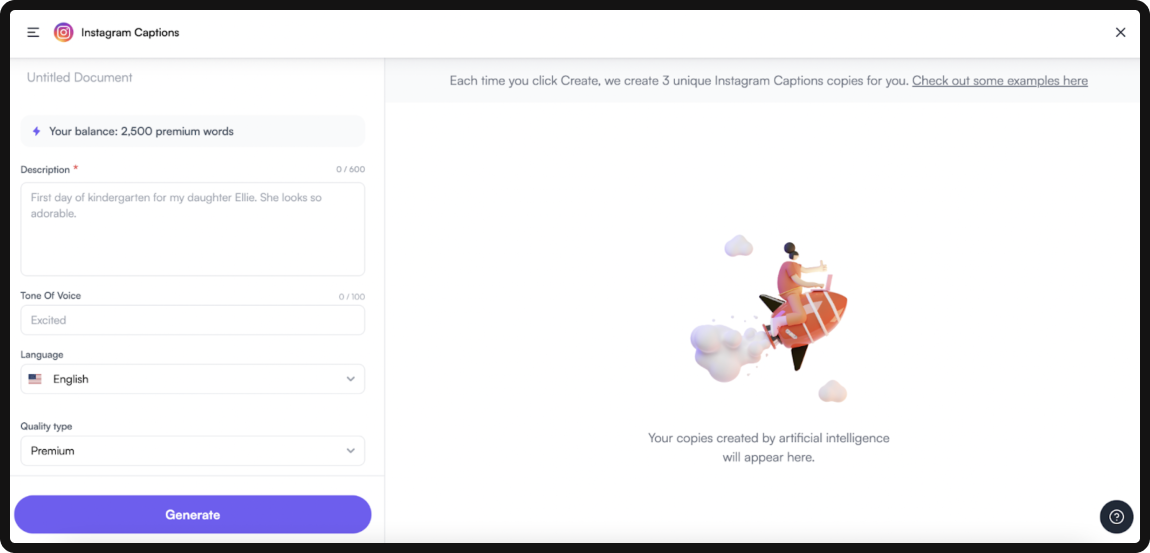
Writesonic helps writers, e-commerce brands, marketing teams and entrepreneurs write SEO-optimized content with an impressively quick turnaround time. Their AI has been trained on high-performing copy from the top brands, meaning it knows what converts and how to write content that resonates with the right audiences.
Price: Free subscription or $10/month for Short-Form
Pro: TikTok-specific templates for hooks and scripts
Con: Can only write long-form content up to 1500 words
7. Copysmith

Copysmith is an AI content solution for enterprises and e-commerce brands, used by companies such as Zapier, Marshalls and Frase. With their campaign builder function, Copysmith can help businesses build a clear path to purchase, resulting in more sales and repeat purchases through a cohesive customer experience.
Price: Starter subscription at $19/month
Pro: Find SEO-optimized keywords and rank higher on search engines
Con: Limited content templates compared to other tools
8. InstaText
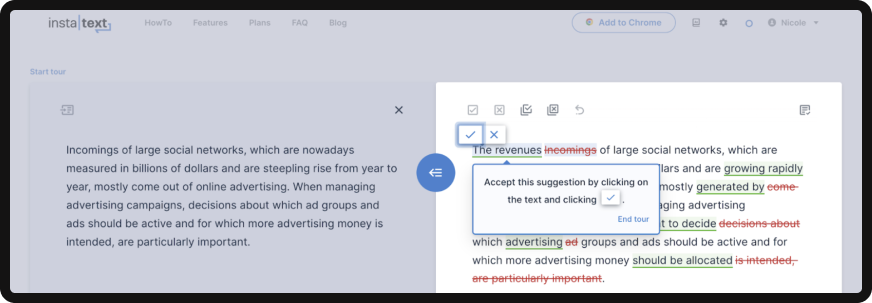
Unlike many of the other writing tools in this list, InstaText is applicable to a wide range of contexts outside of marketing, such as academic papers, translations, and business communications. InstaText is perfect for copy editing and linguistic adjustments, making it the perfect tool for global brands that may require copy in different languages and dialects.
Price: InstaText One subscription at $11.99/month
Pro: Dialect adjustment between US and UK English
Con: Improves existing content rather than generating new content
9. Friday
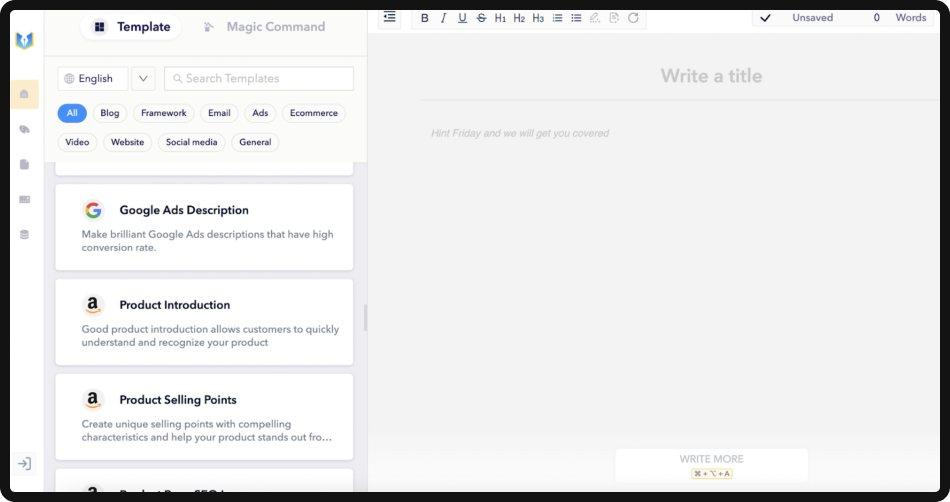
HeyFriday defines itself as a tool that helps you make writing “as easy as a Friday afternoon”. Their team is led by a former Google NLP scientist ( the first author of ALBERT ), and brings together top NLP algorithm engineers from all over the world. With 40+ templates and 20+ writing tones, Friday is an easy solution for quick content outputs for a variety of use cases.
Price: Free subscription or $19/month for Pro
Pro: Discord, Facebook, Twitter and LinkedIn communities for Friday users
Con: Limited templates and tones compared to other tools
10. Snazzy AI

Snazzy AI is a smart copy tool by Unbounce that provides a simple way to create content for your brand. With Snazzy AI, you can generate human, scalable content in minutes using its AI algorithm and diverse set of templates. You can create content for landing pages in just 3 clicks, making it the perfect tool for teams that understand the value of great content at scale.
Price: Free subscription or $19/month for Essential
Pro: TikTok video idea generator for brainstorming and ideation
Con: Lengthy setup process and no option to sign up with Google
11. Notion AI
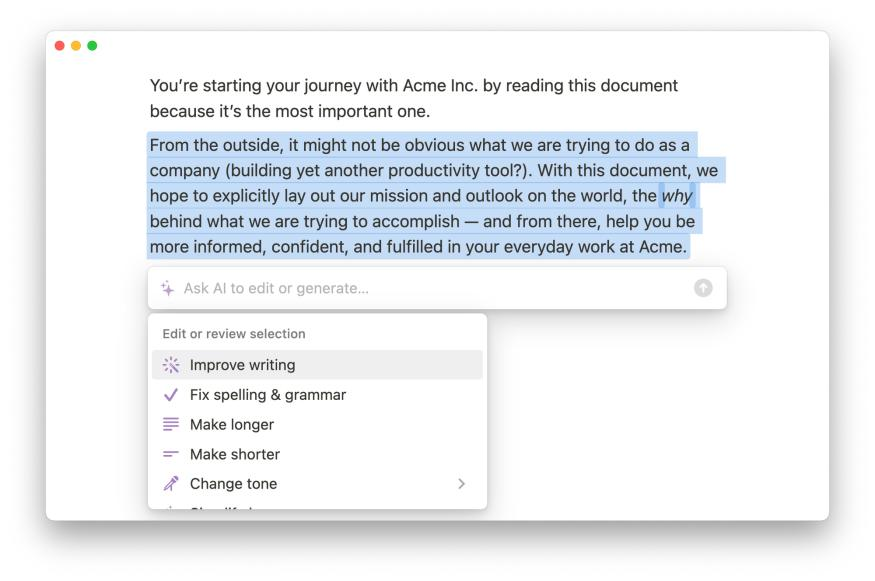
Notion AI is the newly launched AI arm of the popular product management tool. Although Notion AI focuses more on task automation and workflow efficiency, the tool also has many AI copywriting capabilities to help marketers become better writers. Notion AI’s copywriting functionalities encompass spelling and grammar checks, translation, and tone of voice editing.
Price: Free subscription or $8/month for optional add-on features
Pro: Convenient and beneficial for companies and individuals that are already using Notion for other project management purposes
Con: More of a product management automation tool, not specialized for copywriting
What is the best free AI copywriting tool?
Although many AI copywriting tools have free subscription tiers or free trials available, these free plans are often fairly limited, making it hard for copywriters to navigate around the constraints of their available features. One solution to this problem is to use ChatGPT as an AI copywriting tool. The basic version ChatGPT is currently completely free to use, although you can choose to upgrade to ChatGPT Plus for $20/month.
Depending on the prompt that you provide to the AI chatbot, ChatGPT can help you write email and SMS copy, generate long-form blog posts, or even rewrite copy for different target audiences. The possibilities are endless — so long as you give it the correct information to work off of.
Another AI copywriting tool that is free to use is Grammarly, a tool that gives writing suggestions while you write in desktop applications and sites across the web and as you move between apps, social media, documents, messages, and emails. Garmmarly also has a plagiarism checker function available for the premium or business subscription tiers.
How to choose the right AI copywriting tool?
With so many differing AI copywriting tools to choose from, you might be asking yourself: how do I choose the right AI copywriting tool for my business? To help you come to that decision, here are three key areas to consider when determining your tool of choice.
1. Set your budget
The easiest way to narrow down the list of AI tools you’re considering is to set your budget and eliminate the tools that are outside of your budget. Consider how many words per month you would need and how much you’re willing to allocate for each word, content piece or project. That way, you won’t be wasting time exploring tools that are not currently feasible for your business.
2. Understand your needs, niches, and nuances
Every tool has its pros and cons, but the same advantages could also become a disadvantage depending on what your specific needs are. For example, Hypotenuse AI is not as versatile as some of the other tools listed because it is so specific to e-commerce brands, but that may actually be a plus if you are an e-commerce business specifically looking to generate more product descriptions. Therefore, it is important to first define your motivations and use cases for leveraging an AI copywriting tool in order to define the features that you would be looking for in an ideal tool.
3. Create accounts and test 2-3 tools
Most AI copywriting platforms have some version of a free trial or free subscription tier. Before committing, it’s beneficial to create accounts on 2-3 platforms and test them out with actual projects or micro deliverables. Oftentimes paint points and blockers come up through hands-on experience with the tool at hand, and it’s important to identify potential deal breakers before committing to a more premium subscription. When testing these tools, make sure to keep a running list of the advantages and disadvantages of each, and test a variety of use cases to get a full understanding of the product’s capabilities.
Start streamlining your copywriting workflows with AI tools
Now that you’ve understood what AI copywriting tools are all about, you can start selecting one that works for you and your business needs. Keep in mind that tools are here to help you, not to hinder you or replace you, and the best marketers and copywriters are the ones who know how to leverage AI for overall success.
If you need additional help on how to achieve both performance and creativity in your content and copywriting, we’re always here to help.





